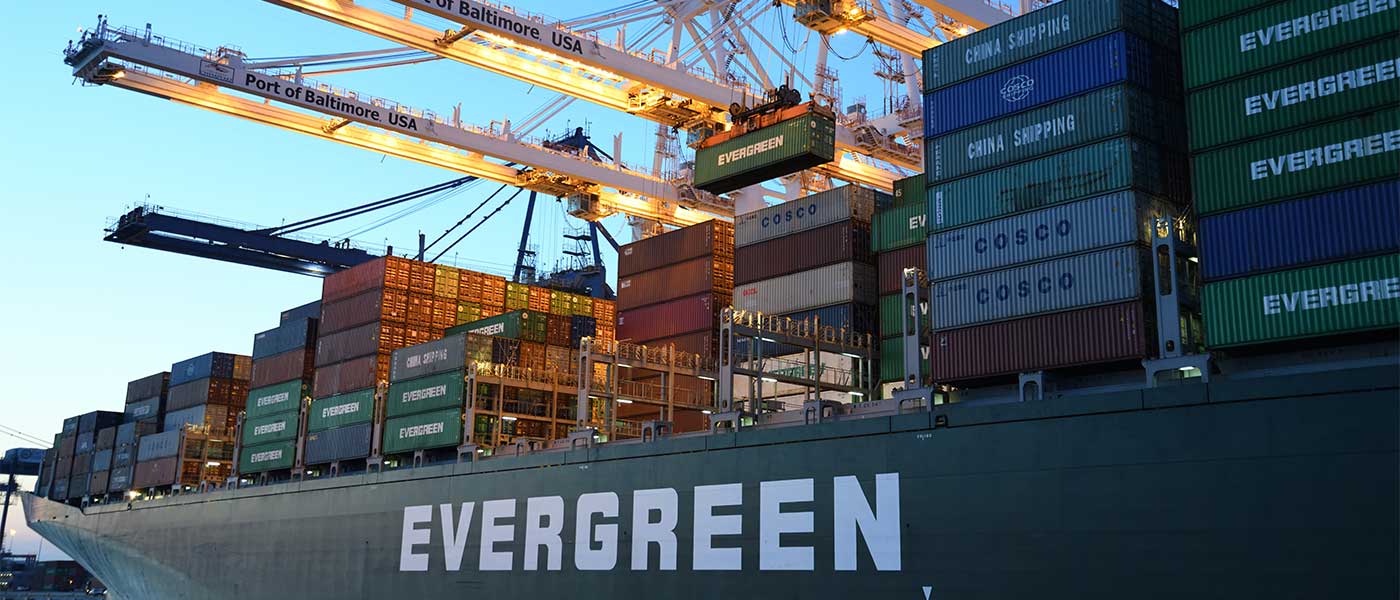Whether you’re an entrepreneur just starting out in the e-commerce space, a medium-sized online retailer with a few years under their belt, or one of the big online retailers, you all share one common reality – inventory management. This is the process of keeping track of all the goods your company has in stock. There’s no sense in selling anything if you don’t know what you have in the warehouse, and have measures in place to replenish your inventory, fulfill orders, and get them to where they need to go.
Proper inventory management is the key to a successful business. In today’s fast-paced market, the costs of not doing this well are astronomical. If you have too much inventory, then you’re just tying up cash and needlessly paying for storage to hold onto things that aren’t moving quickly enough. On the other hand, not having enough inventory leads to delayed deliveries, frequent out-of-stock products, and scores of unhappy customers, which leads to a bad reputation and poor reviews. When dealing with physical products, managing your inventory will be the difference between success and failure.
It sounds daunting, but it’s more manageable than you think.
Inventory Management 101
Inventory Management Tip 1: Find Something That Works For You
Without diving too deep into what solutions are out there (and there are a lot), the first step is to understand the why. The key differentiator between surviving and thriving is figuring out what the right solution for your business needs is going to be, and how it can be scalable to your growth. It sounds simple, but it can be the hardest part of running your online retail establishment.
Since you’re the one who knows your business best, it needs to be a system or solution that you understand and that serves to know your business needs. Are you using multiple channels to sell your products? How big is your warehouse and fulfillment staff? Are you dealing with trying to anticipate how much inventory is sold where and determine the right inventory levels to maximize sales without overstock? Or are you dealing with the issue of discrepancies between your online stock and your on-hand stock? These are key questions to consider when choosing an inventory management partner.
Chances are, it’s this latter point that causes you a fair amount of stress.
Inventory Management Tip 2: Omni Channel Inventory Synchronization
This is one of the most common challenges in inventory management; especially when you have multiple sales channels in E-Commerce and omnichannel. If you are selling in multiple sales channels online, how do you make sure that what you offer online and what you have on hand is always matching? This can be done by splitting inventory pools and allocating dedicated stock for each sales channel. However, by splitting your stock you are reducing your sales potential and inventory turn-over where a stock may already be running low in one channel while it is not moving in another. Monitoring and updating this manually is tedious and prone to error. That’s why it’s best to use a system that syncs your inventory and orders across all your sales channels. That allows you to offer the full selection of inventory you have on hand on all your sales channels, and when a customer orders, the inventory automatically updates across all channels. This way you can sell out faster.
As well, the right system can help avoid order cancellations for out-of-stock items. This usually happens when inventory is not synced between channels and a customer can order a product that was already sold out through another channel. Then you have unhappy customers. Did you know that order cancellations and late fulfillment also hurt your long-term sales on E-Commerce marketplaces, because it affects your seller score and your products become less visible? So keeping one pool of stock and inventory in sync across all your sales channels is really important for the success of your business.
The right solution needs to be something that can synchronize your inventory across channels, and slot effortlessly into your order fulfillment cycle, and negate this common inventory pain point. Ultimately, it needs to make your job easier. That way, you can focus on growing your E-Commerce store and let the inventory management side work automatically.
Once you know what your business needs are, you can start to build out a rock-solid system that will help you grow.
Inventory Management Tip 3: What Does Inventory Even Mean?
It’s a pretty obvious question, but to really understand the details, it bears diving deeper into the fundamentals of what inventory is, and how best to manage it for your needs. By knowing how these core ideas work within the framework of inventory management and your business, you can carve out your own path, rather than following someone else who might lead you astray. Hence, getting a firm grasp on key terms and the aims and objectives of how an E-Commerce business should manage its supply, will be a key asset in your business toolbox.
You can find various definitions of the term out there, but it essentially boils down to “the sum of all items used in your business that are intended for sale.” These are the all items and materials that go into getting your products manufactured, and include items ready to be sold, and items that are still in production. This means raw materials, any work-in-progress, and your finished goods. You need to account for it all.
In most cases, but not always, the process is linear. You start with the raw materials, make your product, and then sell/ship it. In the meantime, you need to have a place to store raw materials, finished products, and be able to have a verified record to keep track of it. And, at times, unexpected things will happen, from price changes to a change in your raw material supply, and you’ll have to adjust on the fly in a fluid and dynamic process that can easily overwhelm you.
Hence, you need to way manage all that stock and all the variables that come up.
What Inventory Management Should Do For Your Bottom Line
Aside from keeping the inventory you already have on hand in sync across your sales channels to make sure that customers receive what they have ordered, it’s also important to plan your inventory levels to match your target sales and ensure you always have best selling products in stock.
This can be achieved by:
- Improving the accuracy of your manufacturing and order fulfillment cycle.
- Keeping your inventory organized and using your space to its fullest potential.
- Cutting down on waste such as inventory carrying costs, transportation, and misplaced items.
- Saving you time and money by lowering production time and improving your organization parameters.
The sum total of accomplishing these goals will save you time, money, and human resources. It will also lead to the efficient creation and distribution of your products, ensuring/fostering/delivering 100% customers satisfaction. That’s what it’s all about. If you don’t have any customers, it’s impossible to have a business.
Inventory Management Comes In Multiple Sizes
It’s important for an E-Commerce business of any size to keep up to date with its inventory management practices as a rule. If you’re lacking the right foundations, or have multiple inventory pools across multiple online channels, it’s easy to fall behind your competitors. But with any workflow or process, regardless of the business, there are several different ways to go about managing your stock. All of these serve as great foundational tools for streamlining this facet of your business and giving you the space to focus on growing.
Here is a selection of the most popular/successful practices:
Perpetual Inventory
Historically, there have been two major models of inventory management: periodic and perpetual inventory. Periodic worked by tracking inventory with regular stock counts (weekly, biweekly or monthly.) Anything that happened in between wasn’t counted, and the hope was that the books would all add up in the end. Obviously, this isn’t an ideal system.
Perpetual inventory is when you update your inventory every time an order is placed, or stock is moved around. In pre-cloud times, this was a time-consuming process and not very popular. Today, however, you have your choice of management software and fulfillment partners that can update your inventory in real-time and can inform you if you are running low on materials.
This kind of system tracks all kinds of inventory (raw materials, work-in-progress, and completed) automatically, and organizes your supplies based on its stage in your production schedule. Another key benefit of automating your perpetual inventory is that it’ll ensure that nothing goes missing, is wasted, or is assigned to two projects at once.
Just-in-Time Inventory
This is the philosophy of manufacturing to demand. You make it only when the order comes in, and not before. This involves careful planning and serves to cut down costs from the production process, while creating customized and high-quality products. This allows you the latitude to eliminate waste and look at any inefficiencies so you can reduce them as much as possible.
On the other hand, if you’re manufacturing to each and every order, and you get inundated with multiple orders all at once, this could lead to a delay in production and shipping, which doesn’t bode well for your customer demand.
ABC Inventory
This is a widely used method of categorizing your products into what sells best and what doesn’t. This model hinges on the fact that most of your business’ sales are for a minority of the products you sell. For example: let’s say an item that is a small part of your total inventory is your highest selling item. This is your A item. Then, you might have an item that barely sells, but takes up 50% of your inventory. This is your C item. Everything in between counts as your B item. You can then look at these sales and figure out the average “lifespan” of each item and where your inventory flows best.
By categorizing your entire inventory into these tiers, you can determine the ratio that your inventory turns over. If you have something that sticks around for months at a time, taking up space, it might be time to cut the deadstock, and allocate your resources to products that will be more profitable, such as your A or B tiers.
Once you decide on an inventory system, there are also a few things you can do to optimize how well your system works.
Setting Some Parameters
“It’s one thing to have a system in place to manage your inventory levels, and you also need to add in a few parameters to ensure you have stock in the first place to maximize the ROI of your E-Commerce business. This means setting some thresholds to keep you in the black and in your customers good books.
The best place to start would be with a Reorder Point. This is the inventory level that you never want to go below and is a safety net to ensure you don’t run out of stock. Ideally, you’d want a point that would allow you enough time to reorder before your production suffers and manufacture any sub-assemblies and products that go into something bigger. This is an essential inventory management technique to ensure that your supply chain is strong and you don’t have any issues with filling customers’ orders.
That said, it’s also a good idea to have Safety Stock. This should be the amount of inventory you keep in the warehouse in case of spikes in demand, or shortages in your supply chain. It’s a rainy day fund that should take into account both raw and finished products, to ensure your customers get their deliveries on time. And, there’s a trick; you want to ensure you have balance. You don’t want to take up valuable warehouse space with safety stock, but you also want to ensure that you have enough. Finding the right management partner will help you formulate a safety stock formula, resulting in the targeted balance.
Choose Locad As Your Inventory Partner
Locad supports your business growth with our smart fulfillment solution. Our team is here to secure your customers’ loyalty with faster shipping, reduced logistic costs, and facilitated expansion to new markets.
It starts with these powerful steps:
- Sell in all your channels from one inventory pool, always in sync and maximizing your sell-through. The Locad platform provides free software to manage your orders and inventory across multiple shops.
- Ensure that your orders have a high fulfillment rate and get sent out on time. This improves your seller quality score on the marketplaces which directly translates to visibility and sales. Like a free marketing boost. And your customers will thank it as well, studies have shown that smooth and on-time fulfillment is one of the biggest drivers of customer loyalty in E-Commerce.
- With LOCAD’s control center you are always up to date about your inventory and stock movements, and you can easily filter products that need reordering or do not move.











